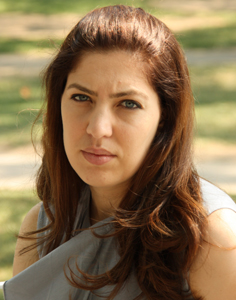
Lidia Badarnah Kadri is an architect with major interests in biomimetics, design concept generation, building envelope adaptation, environmental design, and urban design. She received a PhD degree in Architecture from Delft University of Technology in 2012, and a B.Arch. degree Cum Laude from the Technion – Israel Institute of Technology in 2005. Lidia was the recipient of the 1st prize of the Israel and Leon Reiskin Award 2004/2005 for the best, original, and creative design of the final project at the Faculty of Architecture and Town Planning, Technion. Her PhD dissertation proposes a strategic methodology for the generation of biomimetic design concepts. The methodology elaborates on how to carry out a biomimetic design process; create platforms of biophysical information; find analogies; abstract principles; and translate principles into design concepts, rather than provide specific shapes and morphologies to mimic. Throughout her research studies, Lidia has participated in various academic activities, presented her work at international conferences, tutored research work, mentored MSc Projects on biomimetics, and organized and coordinated two international design workshops at TU Delft.
Lidia’s postdoctoral research during the MIT-Technion fellowship period is carried out under the supervision of Prof. John Fernandez, at the Emergent Materials Group of the Building Technology Program at the Department of Architecture at MIT. The main research study focuses on the investigation of new biomimetic solutions to improve the thermal performance of building insulation materials and systems. In the context of heat regulation and the need to reduce energy demands, developing services and technologies, that modify heat transfer, is essential for improved thermal performances (less energy consumption and better thermal behavior). Maintaining a thermal comfort condition is one of the aims of the building envelope for the enclosed spaces occupied by people. The envelope is often considered as thermal barrier or shield that has to be insulated to prevent heat loss and allow it to be open to dissipate heat if necessary. Conceiving the envelope in this way limits potentially efficient solutions, where the building envelope is considered as a medium rather than a barrier, just as in living organisms (their skin or built structures). In this regard, biomimetics, as a design approach, provides a huge potential for innovative solutions for improved thermal performances in general and for buildings in particular.
Link to Lidia’s website: http://badarnahl.wix.com/lidiabk
